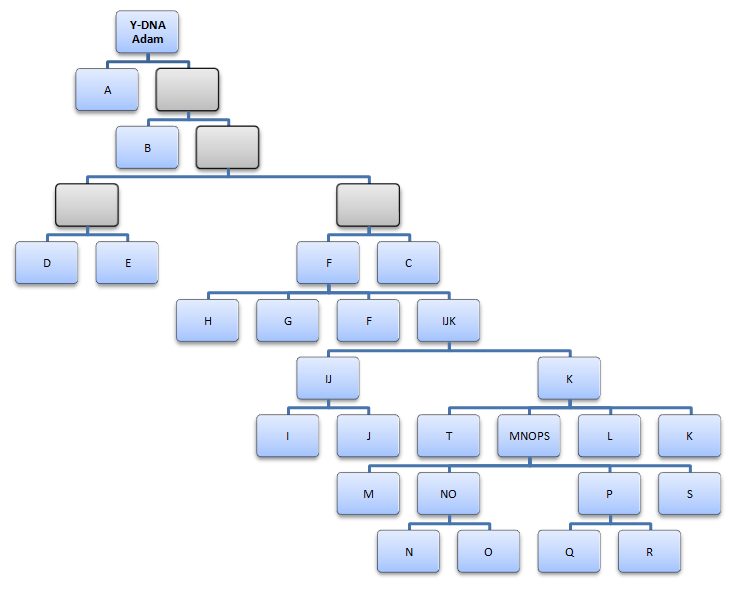
Paternal line
The genetic analysis of conserved regions for Y-DNA enables us to research the origin, history and common ancestors of every paternal line. Geographical and genetic studies of nations and ethnic groups all over the world revealed characteristic sets of Y-STR markers in Y-DNA (STR = single tandem repetition, short repeating patterns in DNA). Comparing the analysed Y-DNA with these population identificators, it is possible to determine where our ancestors came from and what population is the closest on the paternal line. Genomia performs tests for 12 Y-STR markers that enable to match a man to his paternal line (haplogroup).
The Y-chromosomal DNA is present only in males. The females have no Y-chromosome and therefore it is not possible to determine the origin of the paternal line from the female DNA. However, there is a possibility of indirect testing – by analysing Y-DNA of some direct male relatives of the given woman, e.g. father, brother or uncle (or their sons). Thanks to Y-, every man alive today can trace his origin to one common genetic forefather Adam who lived in East Africa about 80 thousand years ago (the information about time differs in various literature sources). The descendants of this one common ancestor left East Africa over time and migrated around the world. The migration routes of our ancestors are shown on the map:
Current haplogroups
The haplotype of every male is determined by a set of Y-STR markers. Based on the knowledge of the haplotype, the male can be assigned to the relevant paternal haplogroup. There have been identified around twenty basic paternal haplogroups all over the world and the most common paternal haplogroups occurring in Europe are R1a, R1b, I1a, I1b, J, K, G, E3b and Q. The following figure shows the progressive evolution of haplogroups from Adam´s Y-DNA:
The major haplogroups in the present world are:
A, B, C, D, E, F, I, J1, J2, G, H, K, L, M, N, O, P, Q, R
Genealogical databases
The result of the genealogical DNA-test is the determination of the haplotype and matching to the relevant haplogroup. For example, comparing haplotypes of two or more males of the same or similar surname, it can be found out whether they have a common ancestor and how many generations ago. There are a number of genealogical databases, where people can find persons with identical Y-DNA haplotype on the basis of the knowledge of their own haplotype. The databases are freely accessible and upon entry of your haplotype you can find other individuals with identical haplotype all over the world.
- Y Chromosome Haplotype Reference Database
- Y Search - Y-DNA public database
- Sorenson Molecular Genealogy Foundation: Y-Chromosome Database
- Family Tree Builder
- www.isogg.org
Note: Into the My heritage database, it is possible to import only the results of SNP profiles, while the YSRE and MtDNA analyses cannot be imported. The SNP profile of a person is determined by whole genome sequencing. It is a completely different technology than STR analysis or direct sequencing of HVR regions.
Other information
Learn also more about the maternal line!
How much does the genealogical test cost?
Thanks to the analysis of conserved regions of mitochondrial DNA, everyone alive on the planet today can trace their maternal ancestry back to just one woman, the common genetic foremother Eve who lived approximately 80 thousand years ago. The mitochondrial DNA is transferred from mother to daughter and is inherited by offsprings of both genders, but only daughters are able to pass this mtDNA on to their children.
More information
Take a look at our price list and order the selected test and DNA collection kit for the testing.
More information





